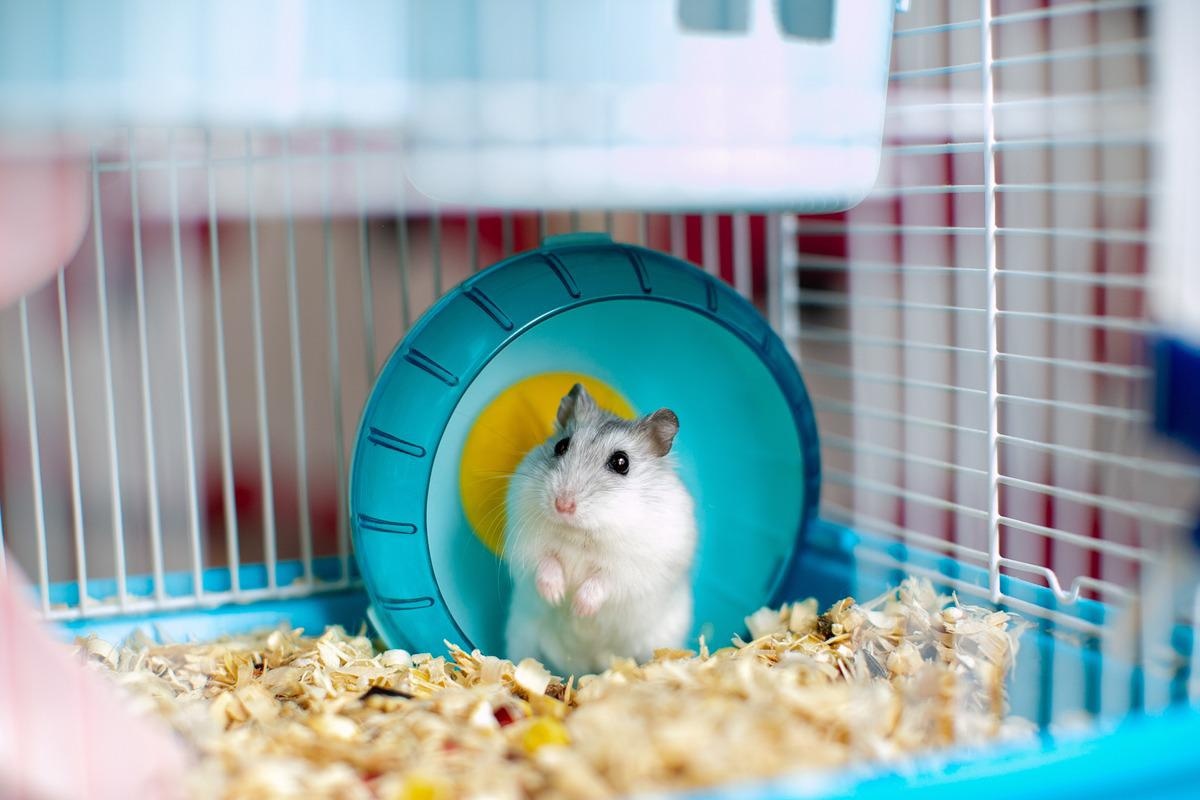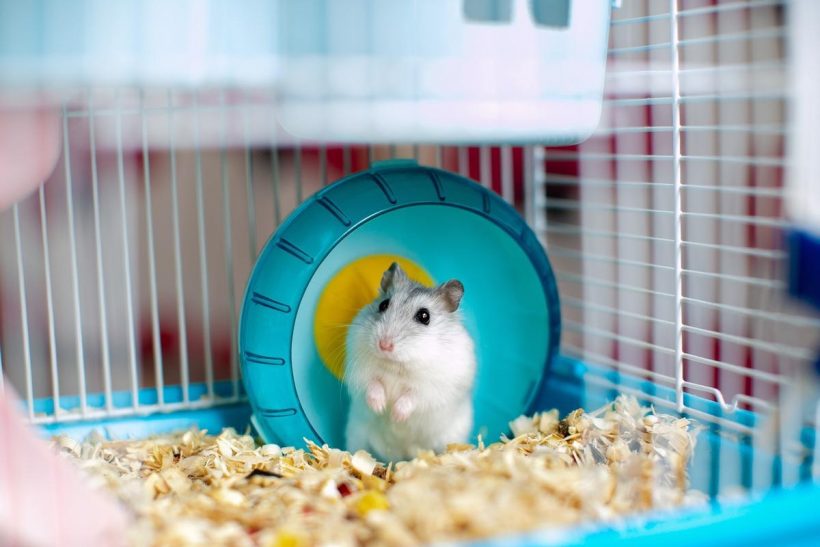In a recent study posted to the Lancet* preprint server, a team of researchers investigated the transmission of the severe acute respiratory syndrome coronavirus 2 (SARS-CoV-2) Delta variant of concern (VOC) from infected hamsters to humans.
 Study: Transmission of SARS-CoV-2 (Variant Delta) from Pet Hamsters to Humans and Onward Human Propagation of the Adapted Strain: A Case Study. Image Credit: marinakarpenko/Shutterstock
Study: Transmission of SARS-CoV-2 (Variant Delta) from Pet Hamsters to Humans and Onward Human Propagation of the Adapted Strain: A Case Study. Image Credit: marinakarpenko/Shutterstock
Several studies have reported SARS-CoV-2 transmission from humans to animals throughout the course of the coronavirus disease 2019 (COVID-19) pandemic. However, only one instance of SARS-CoV-2 transmission from animals to humans in farmed mink has been reported so far. Understanding the potential spread of SARS-CoV-2 from animals to humans is instrumental in raising awareness and improving existing COVID-19 control policies.
About the study
The present study assessed the transmissibility of the SARS-CoV-2 Delta VOC from pet hamsters to humans and the consequent propagation and adaptation of the VOC in other humans.
The technical staff and veterinarians of the Government Agriculture, Fisheries, and Conservation Department (AFCD) collected the samples of a SARS-CoV-2-positive pet shop worker and the four people who tested SARS-CoV-2-positive after subsequent contact with the worker. Eluted ribonucleic acid (RNA), obtained from the supernatant of the swabs collected, was quantified by reverse transcription-polymerase chain reaction (RT-PCR) assays, which were selective for N-gene and ORF1b-gene of SARS-CoV-2. Two independent laboratories confirmed samples from the initial screening that tested SARS-CoV-2-positive by RT-PCR.
RNA from SARS-CoV-2-positive samples with a significant viral load were analyzed by next-generation sequencing of the full viral genome. These SARS-CoV-2 genomes were studied together with the 40 most similar Delta (AY.127) VOC sequences, five most similar AY.127 sequences from the Netherlands, all previous AY.127 sequences from Hong Kong, and outgroup reference sequences of Alpha (B.1.1.7), Beta (B.1.351), Gamma (P.1), and Kappa (B.1.617.1) VOC sequences.
The single nucleotide polymorphism (SNPs) in SARS-CoV-2 genomes were compared to that of reference genomes, and the occurrences of variants with a single nucleotide were quantified. A surrogate virus neutralization test (svNT), specific for SARS-CoV-2, was also conducted.
Results
The study results showed that the Delta VOC caused the SARS-CoV-2 infection in the pet shop worker (index patient). The mother (patient 2) and daughter (patient 3), who had contact with the index patient, as well as the father (patient 4) and son (patient 5), all tested SARS-CoV-2-positive by RT-PCR. All of these infected individuals had received two doses of the SARS-CoV-2 vaccine.
A total of 125 swab specimens were collected from hamsters, rabbits, and guinea pigs from the pet store. Almost 10% of the rabbits tested positive for SARS-CoV-2 by RT-PCR, while none of the other two species were found infected in the initial screening. A more detailed sample analysis of the pet store showed that 43.8% of the Syrian hamsters tested RT-PCR-positive for SARS-CoV-2 while 31% of the Syrian hamster sera contained SARS-CoV-2 antibodies. Altogether, 50% of the Syrian hamsters indicated a history of SARS-CoV-2 infection. However, none of the dwarf hamsters tested positive for SARS-CoV-2.
In the initial screening of the warehouse that supplied pets to the pet house, 511 swab samples were collected from hamsters, rabbits, chinchillas, mice, and guinea pigs. On testing, only one Syrian hamster swab was positive for COVID-19. Detailed sampling of the warehouse indicated that 16.7% of the hamsters tested positive for SARS-CoV-2 by RT-PCR, while 58.3% of hamster swabs had SARS-CoV-2 antibodies.
When the samples from patients 1, 2, 3, and positive hamsters were analyzed via full genome sequencing, all the samples tested positive for SARS-CoV-2 Delta VOC. They were clustered in the same phylogenetic tree, indicating similarity in virus origin. However, it was noted that the viral genomes of patient 1 were phylogenetically different from that of patient 2 and patient 3 by five nucleotides, while the viral genomes of patients 2 and 3 were identical to each other. Notably, some viral sequences in hamsters differed by only one nucleotide from patient 1 and by only three nucleotides from patients 2 and 3.
Conclusion
The study findings showed that the high similarity in the viral genomes of patient 1 and the infected hamsters suggested direct transmission of SARS-CoV-2 from the hamsters to the patient. The difference in the sequences of patient 2 from that of patient 1 indicated that patient 2 directly contracted the virus from hamsters and not from patient 1, thus reporting two separate instances of hamsters to humans SARS-CoV-2 transmission.
The researchers believe that similar spillover infections of SARS-CoV-2 from other animals to humans are plausible and can potentially provide a secondary reservoir for the virus to adapt and cause further zoonotic spillover in humans. Further awareness, surveillance, and a change in pet animal trade control policies are necessary to curb the zoonotic spread of SARS-CoV-2.
*Important notice
Preprints with The Lancet publish preliminary scientific reports that are not peer-reviewed and, therefore, should not be regarded as conclusive, guide clinical practice/health-related behavior, or treated as established information.
-
Yen, H. et al. (2022) "Transmission of SARS-CoV-2 (Variant Delta) from Pet Hamsters to Humans and Onward Human Propagation of the Adapted Strain: A Case Study", SSRN Electronic Journal. doi: 10.2139/ssrn.4017393. https://papers.ssrn.com/sol3/papers.cfm?abstract_id=4017393
Posted in: Medical Science News | Medical Research News | Disease/Infection News
Tags: Agriculture, Antibodies, Coronavirus, Coronavirus Disease COVID-19, covid-19, Gene, Genome, Nucleotide, Nucleotides, Pandemic, Polymerase, Polymerase Chain Reaction, Propagation, Respiratory, Ribonucleic Acid, RNA, SARS, SARS-CoV-2, Severe Acute Respiratory, Severe Acute Respiratory Syndrome, Single Nucleotide Polymorphism, Syndrome, Transcription, Vaccine, Virus

Written by
Susha Cheriyedath
Susha has a Bachelor of Science (B.Sc.) degree in Chemistry and Master of Science (M.Sc) degree in Biochemistry from the University of Calicut, India. She always had a keen interest in medical and health science. As part of her masters degree, she specialized in Biochemistry, with an emphasis on Microbiology, Physiology, Biotechnology, and Nutrition. In her spare time, she loves to cook up a storm in the kitchen with her super-messy baking experiments.
Source: Read Full Article
